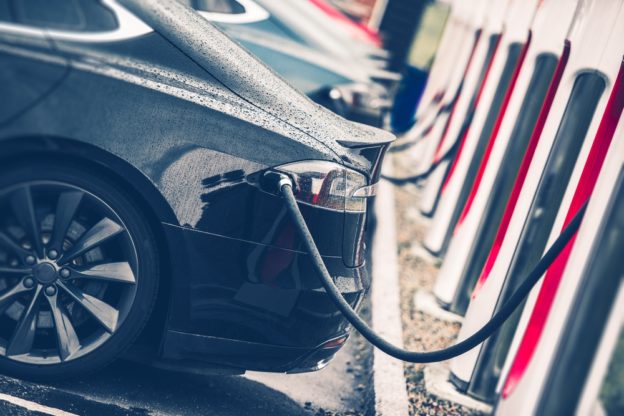
Most of the current electric vehicles are chip modules that use silicon-based IGBTs as inverters, which are the mainstream technology of power semiconductors in the field of electric vehicles. Although SiC MOSFET has good performance and heat dissipation performance, due to the high cost and complex silicon carbide wafer manufacturing technology, the yield performance is not as good as that of silicon wafers. Therefore, the current penetration rate of silicon carbide in electric vehicles is still not high. .
However, since the leading electric vehicle manufacturer Tesla launched the Model 3, the market atmosphere of high-end electric vehicles may change slightly. Compared with other electric vehicle manufacturers in the market that use silicon substrate chips (IGBT, MOSFET, etc.) to make PEM (Power Electronics Module, which is used as the current conversion between AC/DC), Model 3 completely uses SiC MOSFET for PEM, which also allows SiC MOSFET has caused discussion in the field of electric vehicles. According to the manufacturer, the Model 3 uses SiC MOSFET modules, so the AC/DC current conversion efficiency ranks first in the long-distance electric vehicle market (regardless of the driving distance, Hyundai’s electric vehicle Ionic Electric has better current conversion efficiency. Model 3 is good, but the battery power is only 27KWh, and the driving distance is only half of Model 3), allowing high-end automakers with Tesla as their main competitor to evaluate the benefits of using SiC MOSFETs.
In addition, the use of SiC MOSFET Module in fast charging piles is also rapidly expanding. Luxury car brand Porsche (Porsche) announced in October 2018 that it uses SiC MOSFET modules to build fast charging stations suitable for various electric vehicles. In addition to boosting its own Taycan, it also shows that fast charging stations are used in high-end electric vehicles. The necessity of the market. From this point of view, although the current majority of electric vehicles are HEVs, and most of the current power components used in electric vehicles are still mainly IGBTs, the construction of infrastructure and consumers' willingness to purchase still need time to lay out. From a long-term plan , The market demand is quite promising, and it will continue to promote the topicality of silicon carbide
In addition, for automotive Tier 1 manufacturers and OEMs, for example, Robert BOSCH recently announced that in 2020, it will enter the production of automotive microchips using silicon carbide wafers as substrates, mainly for AC/DC conversion, and fully assist major customers to seize In the electric vehicle market, Japanese manufacturer DENSO also has its own ability to produce related chips; in terms of car manufacturers, Chinese car manufacturer BYD (BYD) has self-developed silicon carbide and plans to expand silicon carbide power components, and has invested heavily in the deployment of silicon carbide to establish a complete industry Chain, integrating materials (high-purity silicon carbide powder), single crystals, epitaxy, wafers, module packaging, etc., is committed to reducing the production cost of silicon carbide components and accelerating the application in the field of electric vehicles.
It is a pity for Taiwan’s supply chain that due to the lack of assistance from the local auto industry in Taiwan, the penetration rate of automotive chips is not high. In addition, the major automakers mostly cooperate with long-term Tier 1 or chip vendors. Taiwanese manufacturers have to cut into the automotive supply. There are still some difficulties to be overcome in the chain, including long-term vehicle certification and the establishment of customer purchase willingness. At present, the more profitable applications are still mainly in industrial power management and communications. The supply chain of the automotive silicon carbide industry must be able to There is a certain degree of proportion, and continuous efforts are needed.
(Picture from shutterstock)
Article source:https://technews.tw/2019/10/29/high-lv-ev-technology-evolve-helping-to-increase-the-confidence-of-manufacturers-of-sic-manufacturers/











